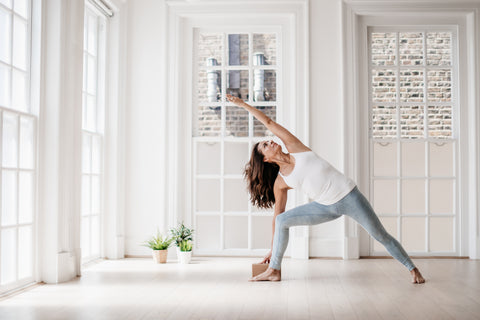Why does bone health matter?
Our bones provide a framework of support for our bodies and allow us to move freely and steadily in the world. There are 206 bones in the human body forming a vibrant and evolving matrix of tissue. They protect our vital organs (brain, heart, lungs etc), store minerals such as calcium and phosphorous and produce blood cells that transport oxygen and bolster our immune system.
The groundwork of our bone matrix is laid by our mid twenties and maximum bone density reached in our 30s. Bones begin breaking down and thinning from our 30s to 40s with accelerated bone loss in our 50s as oestrogen levels decline with the onset of menopause and continued gradual loss in older age. According to research, about 10% of a woman’s bone mass is lost in the first 5 years of menopause.
Strong bones and muscles protect against injury and help us improve our balance, mobility and coordination. This becomes especially important as we age because it helps to prevent falls and the fractures or broken bones that may result. We want to focus on maintaining our bone strength for health, fitness and longevity.
Osteopenia or Osteoporosis?
There are two commonly diagnosed bone conditions that affect women – yes, women are four times more likely to experience them than men. Osteopenia is when your bones become thinner and less dense than normal and can begin to happen from your 30s without any major symptoms. Osteoporosis is more severe bone loss leading to an increased risk of breaks, fractures and loss of spinal flexion.
A woman’s risk of breaking a hip is actually equal to her combined risk of breast, uterine, and ovarian cancer, and the complications that result from hip fracture can be life threatening. Yet we don’t talk about these conditions nearly enough until it is too late and a bone is actually broken or fractured.
Several factors play a role in developing osteopenia and osteoporosis. These include genetics, the decrease in oestrogen as women enter perimenopause in their 40s and beyond to menopause and post menopause, cancer treatments such as radiation and chemotherapy, eating disorders, drinking, smoking and an overactive thyroid. Common nutrient deficiencies in vitamin D and calcium also play a significant role.
Both conditions can be measured through a Dexa Scan or CT Bone Mineral Density Scan to determine the current state of your bone density and risk of fracture.

Yoga and the Key Pillars of Bone Health
Your bones become stronger when you use them. The key pillars of sustaining bone strength include stimulating bone through weight bearing movement and exercise, muscular engagement of the arms, legs, abdomen and gluteus and balance to build agility and equilibrium.
Yoga specifically addresses these key pillars through balancing and standing poses, twists and backbends which engage your legs, arms, abdominals and spine. Weight bearing, balance and active stretching included in yoga is proven to be beneficial for bone health. When you’re bearing weight through your body and engaging your muscles you are applying stimulating pressure to bone which activates bone strengthening cells.
This has the added benefit of releasing immunity protecting cells located in bone marrow; working on balance to develop proprioception - the awareness of your body’s position and movement through space – key to establishing agility and equilibrium to prevent falls; and because bone forming proteins synthesise after 10 seconds of stimulating pressure on bone a regular yoga practice allows you to initiate this natural physiological process.
A seminal two-year pilot study of yoga and osteoporosis found that participants who did 10 specified yoga postures per day for about 10 minutes per day experienced improvements in bone density (Fishman, 2009). A 2010 review found yoga is as effective or better than other forms of exercise at improving muscle strength and flexibility (Ross, 2010).
Yoga has the added benefit of reducing cortisol levels, lowering stress which can be a factor in decreasing bone density by inhibiting osteoblasts - our bone building cells.

Movement for Modern Life Yoga Offerings
Cultivating strength, balance and ease is at the heart of yoga. It is also fundamental to maintaining bone strength and preventing bone loss as we age. Menopause for Modern Life is the first online yoga course of its kind to bring together a holistic range of yoga practices to support you through menopause. It includes a specific series of classes aimed to build bone strength, stability and balance in a gentle and accessible way.
Find out more here:
https://movementformodernlife.com/course-menopause-for-modern-life
Share Twitter Facebook Pinterest

